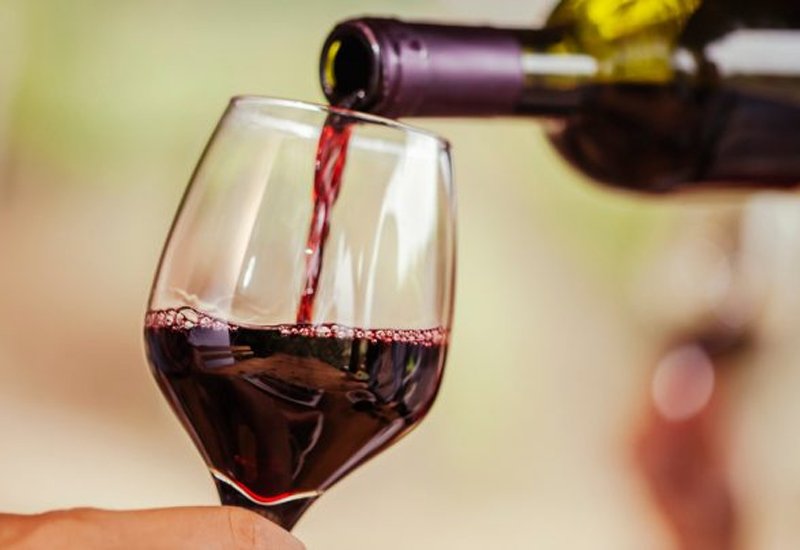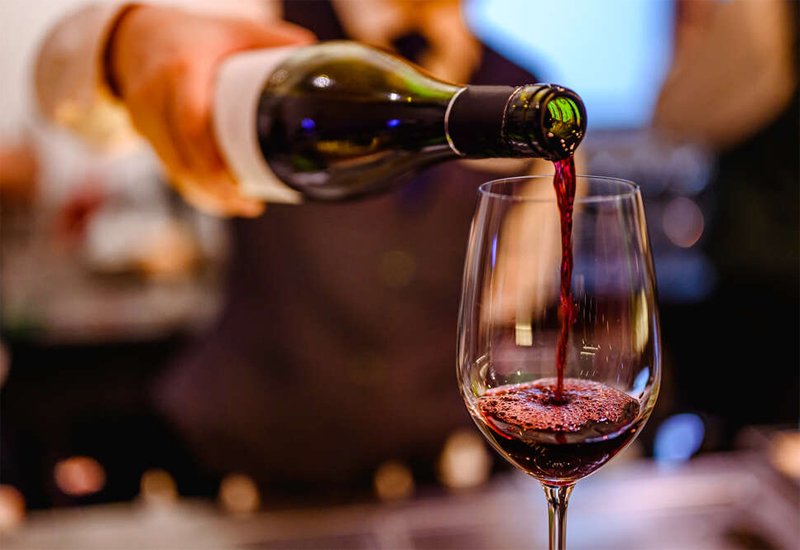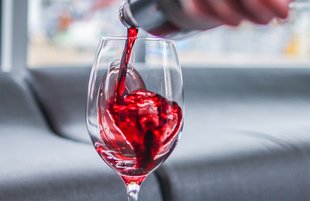What are Wine Tannins, and How Do They Affect Your Wine?
Tannins are the magic compounds in wine that give you a dry and astringent mouthfeel.
How do tannins end up in your wine? Are they good or bad for you? How does it affect your wine?
Buckle up and get ready to discover all about tannins, including where they come from and what effects they have on your favorite red wine. We’ll also explore some of the best wines with high and low tannin levels and an easy way to add them to your wine collection.
Further reading
- Are you interested in fine wine investment? Start your wine investing journey with this ultimate guide.
- Explore some of the most elegant Champagnes like the coveted Dom Perignon and the festive Moet Champagne!
What are Tannins in Wine?
Tannins are phenolic compounds found in grape skin, seeds, and stems.
These polyphenol molecules transfer to the grape juice from the grape must. That happens during the maceration stage of the winemaking process or during oak barrel aging.
Do all wines have tannins?
All red wines have some amount of tannins since the red wine juice usually has extended contact with the grape must. The longer the juice is in contact with the grapes, the more condensed tannin levels the wine will have.
White wine has little to no tannins since it's pressed quickly and is in contact with the grape skins only briefly.
There are two main tannin types:
- Flavonoids: A flavonoid tannin is a single tannin molecule (monomer) that binds with other flavonoids (a process called polymerization).
Together they form bigger phenol macromolecules. These polyphenolic compound molecules define the wine’s mouthfeel and color.
- Non-flavonoids: A non-flavonoid tannin molecule is a type of phenolic acid mostly found in the grape’s flesh. Non-flavonoid tannins contribute to the texture of your wine.
There are also components called pseudo tannins or phenolic acids (like gallic acid and ellagic acid) which are a type of tannic acid that does not change the taste of the wine.
Where else do you find tannins?
Interestingly, you’ll also find tannin polyphenol acids in other foods like pomegranate (along with antioxidants like proanthocyanidins), cocoa (along with the natural antioxidant catechin), coffee, black tea, green tea, and beer.
In nature, plant tannins are found in the form of hydrolyzable tannins (phenolic compounds soluble in water.) These tannins protect the trees from fungi and microorganisms like bacteria - thanks to the antioxidant properties that can precipitate protein molecule formations and enzymes from bacteria. This prevents such microorganisms from infecting the plants.
Tannins are also used to make animal hides (tanning leather with oak or acacia bark) and for fabric dyeing (hydrolysable tannins.)
Now, let’s see if having a glass of tannic red wine every night is good for you!
Are Tannins Good or Bad for You?

All types of tannins are powerful antioxidants and have a positive effect on your health. They can also slow down the cells’ aging process.
On the other hand, you might’ve heard about the negative effects of tannins. It is believed that consuming too much food and drinks rich in tannins causes migraines - but that’s still not proven.
If you have a headache after a fun night of drinking red wine, don’t judge too fast. See if consuming other highly-tannic foods and beverages like dark chocolate, green tea, or black tea causes the same effect. If yes, you can switch to white wine or lighter roses.
So, how do tannins form before and during winemaking?
How are Tannins Formed During Viticulture and Winemaking?
The concentration of tannins in your wine depends on many factors like the grape variety, the climate, the vineyard location and management, and the winemaking techniques.
Here are all the key factors that influence the tannin levels in your wine:
1. Tannin Formation in the Vineyard
While the grapes ripen on the vine, the fruit starts producing tannins and anthocyanin compounds.Most of the tannins develop in the grape skin. The skin tannins are influenced by the amount of sun the grapes receive.
The greater the sun exposure, the more tannins are formed in the skin. So vineyards with higher light intensity (in high altitude areas) produce more tannic grapes.
The climate also influences the concentration of the phenolic acids in the grapes. In cooler climates, or if the fruit is not fully ripened during harvest, grapes tend to develop harsher tannins. In warmer climates or during late harvest, the grapes will have softer tannins.
Also, grapes with thicker skins (like Nebbiolo and Cabernet Sauvignon) produce more tannic acid, while thin-skinned grapes like Pinot Noir have a much smaller amount of skin tannins.
2. Tannin Extraction During Winemaking
Tannin extraction during winemaking is a process in which the winemaker stimulates the leeching of the grape tannins into the wine.This is done in a few ways:
- Fermenting the whole grape bunches since the grape stems also contain tannins.
- Prolonging the maceration period, so more tannins leach out from the grapes into the wine.
- Performing punch-downs during fermentation (the grape skins are pushed to the top of the vessel.)
- Performing pump-overs during fermentation (the grape juice is extracted and poured over the grape skins.)
- Oak barrel aging, so the oak tannins transfer to the wine.
- Regulating oxidation during the fermentation and malolactic fermentation stages since oxygen stimulates the tannin extraction but also shortens the wine’s aging potential.
Now, are more tannic wines also more age-worthy?
Let’s find out.
How Do Tannins Influence Wine Aging?
Tannins extend the longevity of red wine. The higher the tannin content, the higher the ageing potential of the wine.How does that work?
With time tannins go through polymerization - they bind into bigger polyphenolic compound molecules, which eventually fall to the bottom of the bottle and form sediments.
This process results in a smoother and silkier tannin sensation. So, aging a high tannin wine is worthwhile for many wine enthusiasts and collectors.
And what about white wine?
Some white wines age exceptionally well. However, their longevity comes from higher acidity levels rather than wine tannin content.
So, how do tannins taste like in wine?
The Taste of Wine Tannins

Tannins have an astringent and bitter taste.
But why do tannins give you that distinct puckery sensation and bitterness?
The ability of tannins to precipitate proteins is why you feel a dryness in your mouth after you sip on a highly tannic wine.
After all, saliva is mostly made of protein. So, when you taste the red wine, or some other tannic beverage or food, the tannin binds to the saliva protein, and you feel a dry astringency in your mouth.
So, what foods pair with your favorite red wine?
Which Foods Go Well With High Tannin and Low Tannin Wines

The astringency and bitter taste of a highly tannic wine go well with rich, savory dishes.
You can combine full-bodied Syrah or Cabernet with a fatty pork steak, smoked ribs, or any other meaty dish.
A low tannin red wine would usually have higher acid levels. Such wines are a great companion to pasta with marinara sauce, lightly grilled fish, or grilled chicken.
Now:
Not all wines have the same tannin level.
Which Red Wines Have High Tannins and Low Tannins?

In general:
- A young wine usually has more concentrated tannin levels and a stronger bitterness sensation than an aged wine. To soften the tannins, you can decant your red wine for about 1-3 hours. This way, you will get a more toned-down silky tannin sensation rather than a jarring and abrupt dryness.
- A good red wine will have a delicate balance between the tannins and other components like acidity, flavor, and aroma. A wine that has overpowering tannins would be too harsh and unpleasant on the palate.
The best part is that there are wines with different tannin levels. So whether you prefer a plush wine with mild tannins or a vivid red with bright and chewy tannins - there’s definitely a bottle that will fit your taste!
Here are some of the best red wines with high and low tannin levels:
A. Red Wines with High Tannin Levels
Wines with a higher tannin level are usually full-bodied with higher acidity that balances out the tannins. Most of them also have a bold flavor profile with notes of dark chocolate and concentrated black fruit aromas, which complement the wine’s astringency.
Some great high tannin wine bottles are:
1. Cabernet Sauvignon
- Screaming Eagle Cabernet Sauvignon 2015: $4,110
- Schrader Cellars 'Old Sparky' Beckstoffer To Kalon Vineyard Cabernet Sauvignon 2010: $700
2. Syrah
- Domaine Jean-Louis Chave Ermitage 'Cuvee Cathelin' 2009: $12,576
- Domaine Jamet Cote Rotie Cote Brune 2018: $570
3. Nebbiolo
- Giacomo Conterno Monfortino 2001: $1,404
- Gaja Sori San Lorenzo Langhe-Barbaresco 2017: $534
4. Petit Verdot
- Abadia Retuerta P V Petit Verdot Vino de la Tierra de Castilla y Leon 2001: $451
- Passopisciaro 'Franchetti' Rosso 2015: $119
5. Sangiovese
- Case Basse di Gianfranco Soldera Brunello di Montalcino Riserva DOCG 1997: $956
- Case Basse di Gianfranco Soldera Toscana IGT - Brunello di Montalcino DOCG 1999: $833
B. Red Wines with Low Tannin Levels

If you’re not a fan of the bolder red wine styles, there are some elegant lighter reds that have lower wine tannin concentration and are more gentle on the palate. These wines would typically have red fruit and softer oak flavors.
Get a bottle or two of these fine wines:
1. Pinot Noir
- Domaine de la Romanee-Conti Romanee-Conti Grand Cru 2015: $27,472
- Domaine Georges & Christophe Roumier Musigny Grand Cru 2015: $20,486
2. Merlot
3. Tempranillo
- Teso La Monja 2008: $2,138
- Dominio de Pingus 'Pingus' 2004: $1,907
4. Malbec
- Tiano & Nareno Travesia 1908 2013: $280
- Vina Cobos 'Cobos' Marchiori Estate Malbec 2016: $297
- Clos Rougeard Saumur-Champigny Le Bourg 2001: $711
- Weingut Schloss Halbturn Cabernet Franc 2009: $708
Now, if you feel like sipping a glass of everyday red wine, go ahead! You’ll find plenty of affordable options in your neighborhood wine store.But if you’re looking for a more expensive, investment-grade wine, whether to have it with your dinner or to add to your wine collection, you might have trouble finding it at your local wine shop.
Instead, you can easily build a collection of wines through Vinovest.
Add Some of the Best Ageworthy Wines to Your Collection With Vinovest

Vinovest is an AI-based wine investment platform that buys, stores, sells, and authenticates your wines for you. With Vinovest, you can build an enviable wine collection hassle-free.
So, what benefits do you get once you sign up? Here are a few of them:
- Buy some of the most sought-after wines from Bordeaux, Napa, and other popular wine regions at below-retail prices.
- Vinovest’s master sommeliers will ensure only the highest-performing wines go into your portfolio, and they will trace each bottle’s provenance before you purchase it.
- Store your wines in bonded warehouses under optimal light, temperature, humidity, and vibration levels.
- Get significant tax advantages since the bonded warehouses charge no excise duty or VAT.
- Pay a low annual fee - only 2.85%, which drops to 2.5% for a portfolio of over $50,000. The fee will cover all your expenses related to buying, selling, storing, and authenticating your wine. You’ll also get a full insurance policy and active portfolio management.
- Get your wine cases delivered to you (or your buyer) anywhere in the world.
Dive into the Marvelous World of Wine Investing
Exploring how tannins affect the taste of wine is a fun activity for any wine lover, whether it’s a wine with condensed tannin levels or a light and fruity one.
And if you want to treat yourself to a fine Pinot Noir or Nebbiolo, or you want to start your own wine collection, Vinovest is there to help.So, sign up and discover your favorite wines today!



